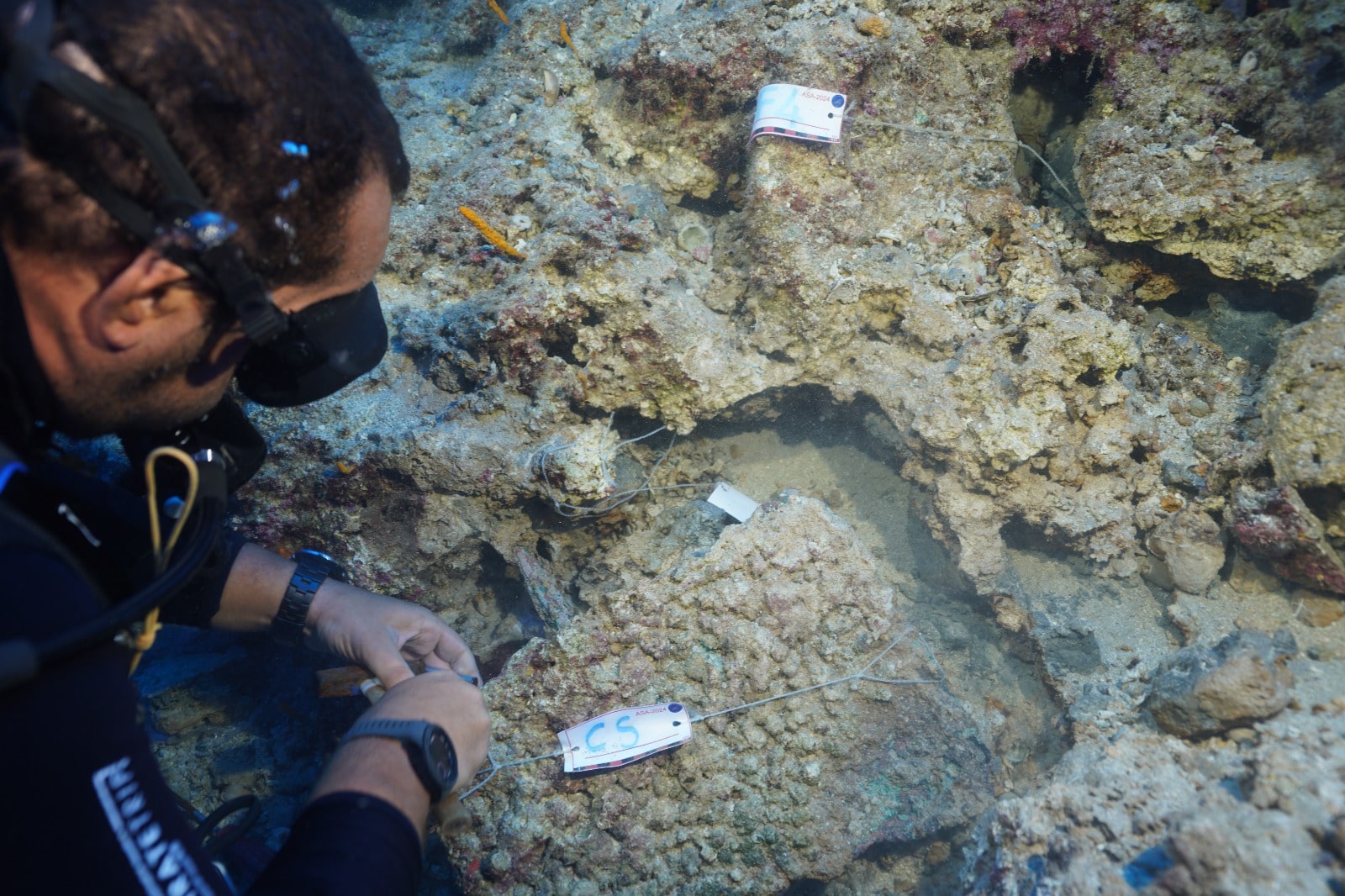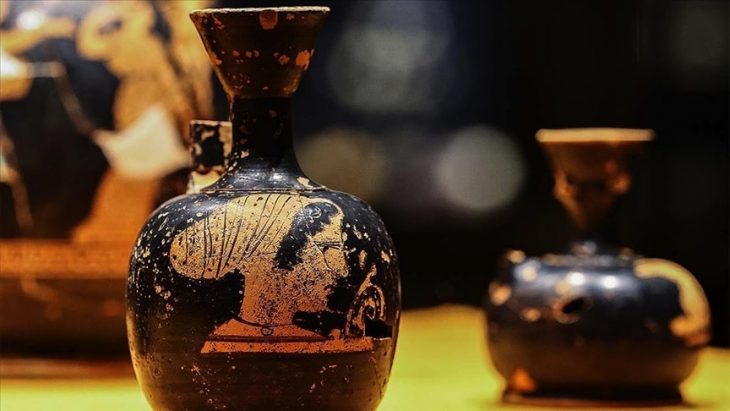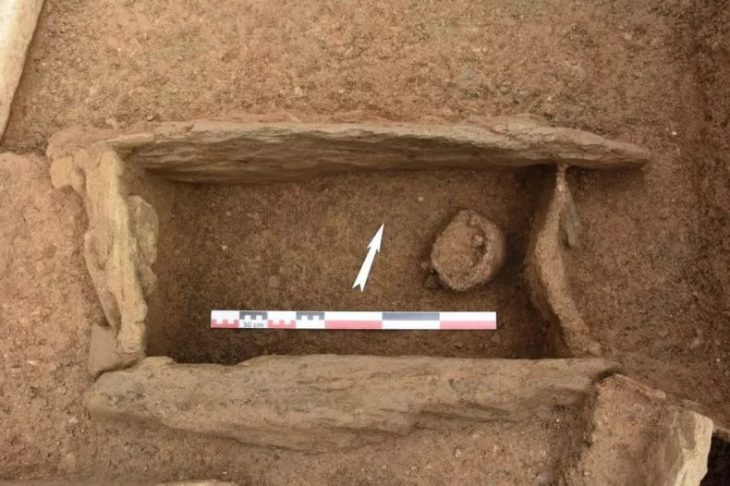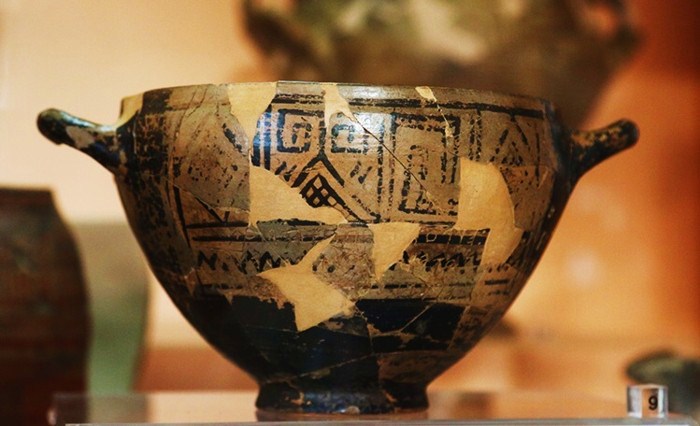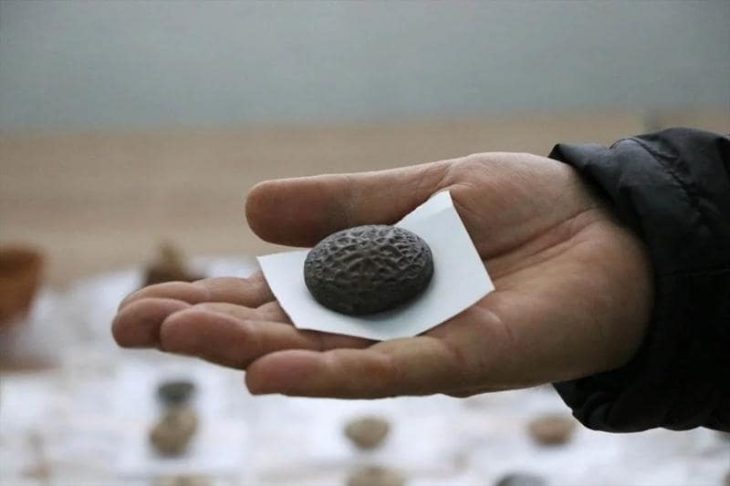A bronze dagger with silver rivets that dates to the Minoan civilization approximately 3,600 years ago was discovered during an underwater excavation off the coast of Kumluca, Antalya.
Work on the vessel, which sank in ancient Lycia, began in July and August 2019 with the permission of Turkey Ministry of Culture and Tourism, under the chairmanship of the Antalya Museum Directorate.
Under the leadership of Assoc. Prof. Dr. Hakan Öniz from Akdeniz University, the sunken ship carrying copper pillow ingots, previously thought to have been extracted from the Troodos Mountains, was found 50 meters deep in the sea during excavations off the Kumluca district of Antalya. The findings suggest the ship was en route to Crete when it sank.
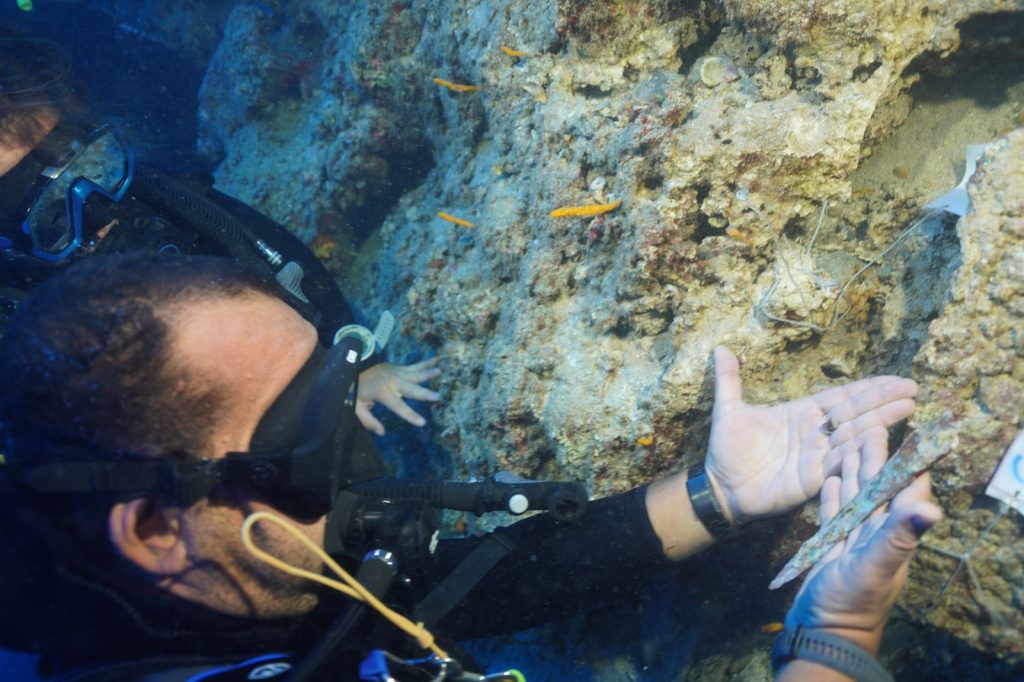
Culture and Tourism Minister Mehmet Nuri Ersoy shared the images of the wreck and the dagger on his social media account and said, ‘A 3,600-year-old secret from the depths of the Mediterranean Sea has come to light. A bronze dagger with silver rivets belonging to the Minos civilization was found during underwater excavations off the coast of the Kumluca district of Antalya. This wreck may be one of the most important discoveries not only in Turkey but also in the world of underwater archaeology,’ he said.
He expressed gratitude to the Akdeniz University and the Directorate of Excavations and Research for their meticulous work in revealing the ancient artifact.
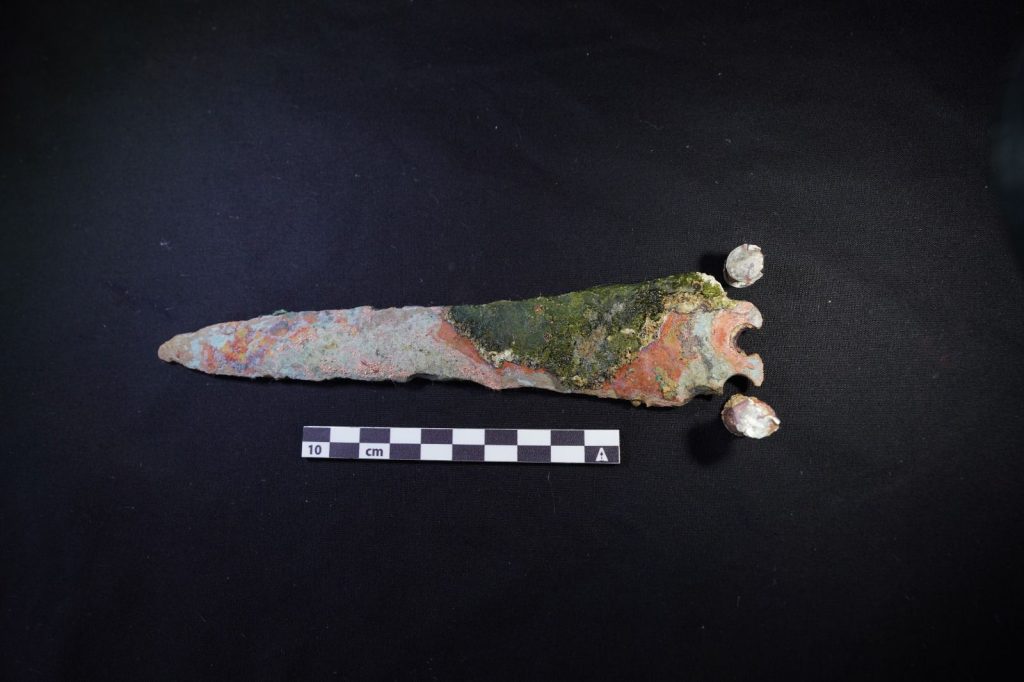
The archaeological studies conducted in 2019 on the Bronze Age shipwreck in Antalya Kumluca focused on in situ documentation, with a small number of samples excavated with the permission of Türkiye’s Ministry of Culture to gain more information about the wreck. In the studies, the latest technology and current methods were applied and the margin of error was minimized. The works on this important shipwreck will be pursued in the following 5 years.
Cover Image: Ministry of Culture and Tourism of the Republic of Türkiye

